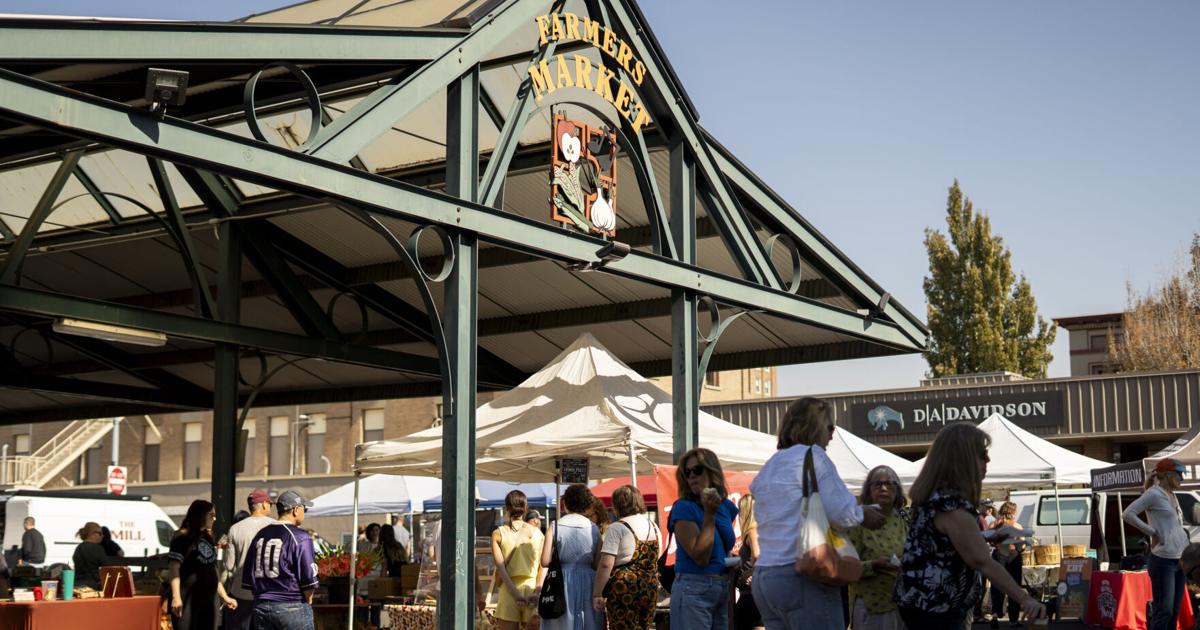Walla Walla’s Downtown Farmers Market has experienced an increase in both revenue and foot traffic so far in its 2025 season compared to last year.
The market operates downtown from 9 a.m. to 1 p.m. on Saturdays from May through October. During this time, about 55 vendors come together and sell various goods such as produce, soaps and candles to the public.
Alex Heiser, the downtown farmers market manager, said the farmers market’s sales revenue was $790,900 as of Tuesday, Sept. 30. Compared to September 2024, the farmers market’s revenue increased by nearly $79,000.
Foot traffic is also up, according to data from the Downtown Walla Walla Foundation. Over the last three years, foot traffic has increased by 58.6% and the average visitor stays at the market for 43 minutes.
Heiser attributed the upward trend in revenue and foot traffic to the marketing efforts of the Downtown Foundation.
The Walla Walla Farmers Market operates at 106 W. Main St. every Saturday from May through October. After that, the market operates at the Showroom on Colville, 70 N. Colville St., in November and December.
Kezia Setyawan, Walla Walla Union-Bulletin
One way the foundation gets the word out is through its various social media channels, such as Facebook, Instagram and TikTok. Through the channels, potential visitors and customers are informed by posts which spotlight vendors and events held at the farmers market.
“I know (social media) has helped tremendously from when I took over … That’s where I think our growth is coming from,” Heiser said.
Adam Mellishrencken, the owner of Horndawg Antler Chews & Apparel, was recently highlighted online by the Downtown Foundation. Mellishrencken’s business operates in northeast Oregon and sells dog chews made out of deer and elk antlers and various apparel.
Another small business highlighted by the Downtown Foundation includes Nurtured bi Nature, an essential oil and skincare shop operated by Cassidie Robbins.
If the upward trend in revenue continues, Heiser said the farmers market is expecting to see “well over” $900,000 in total revenue from the 2025 season.
The increase in sales has also been noticed by some of the market’s newest vendors, such as Stella’s Homestead, which he said was routinely selling out its products.
“More and more people are getting to understand that they can buy fresh and buy local every Saturday at the farmers market,” he said.
More Information
The Downtown Farmers Market’s last day of operation at 106 W. Main St. is Saturday, Oct. 25. For more information on the vendors and musical acts visit downtownww.com/farmers-market or find the market on Facebook.
He also attributed the increase in revenue and foot traffic to a Washington State program that matches EBT credits up to $25. Through the program, individuals could potentially double their credits and purchase produce and other food at the farmers market.
Heiser has been with the farmers market since June 2019 and is a familiar face to the 50-something vendors who attend and sell items each Saturday. When the market is not in action, he also works with each vendor and makes sure the owners fill out the proper forms and attend required meetings.
One challenge the farmers market faces is space. The event is capped on how many vendors it can accept in a given season because the current location, 106 W. Main St., is limited in space.
The farmers market also accepts vendors by the type of products sold. To maintain its status as a farmers market, the market must have 50% of its sales from produce and processed foods.
Mallory Nash, the Downtown Foundation’s executive director, said the market mostly brings in people who live in Walla Walla County, and about 25% of the visitors are from places at least 50 miles away, such as the Tri-Cities.
“Going to the grocery store is not the same experience as going to the farmers market,” Nash said.
She also said that supporting the farmers market helps the local economy and small businesses and allows locals to go out and connect with other community members.
“The farmers market is just one of those things within our community that is highly beloved,” Nash said. “And there have been a lot of people in our community that have impacted it to be what it is today.”

